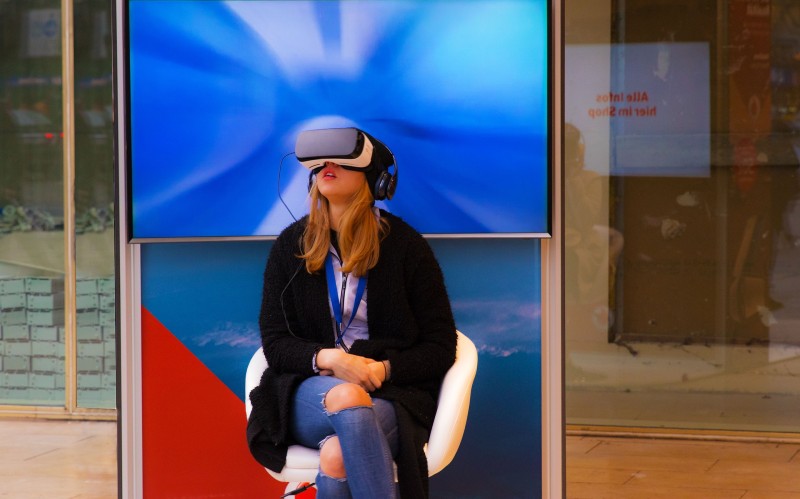Usage of Augmented Reality, Virtual Reality and Mixed Reality, collectively known as Extended Reality or XR, made significant strides in 2019 – but what does 2020 hold?
The XR market continues to grow at an exponential pace across a broad range of industries. The worldwide market is estimated to be $16.8 billion in 2019 but is forecast to exceed $160 billion by 2023.
More than 2,000 mobile AR apps and VR gaming applications may create the public perception that XR is mainly for gaming. But beyond the gaming industry, what does XR have to offer? What other industries are adopting XR technologies?
Where Will the XR Pros Be Working?
Worldwide spending on AR/VR solutions will be led by the commercial sectors, which will see their combined share of overall spending grow from 64.5% in 2019 to more than 80% in 2022, according to IDC.
The VXR Industry Insight Report 2019-2020, based on a cross-sectional survey of 761 XR professionals in Q2-Q3 2019, supports these findings. This research found growth expectations on the consumer side were significantly weaker than they were for the enterprise side. The survey asked these XR pros where they intended to work in the next 12 months. Gaming dropped from 50% to 33% in 2018:
The VXR industry also surveyed enterprise end-users. Over 88% said XR had a positive impact on their businesses.
Many are predicting 5G to further accelerate the growth of XR technologies. By the end of 2019, most major wireless carriers are targeting 5G coverage of 30 U.S. cities. “As we approach the 5G era, the dramatic quantum leap of 5G service enhances many creative capabilities in XR, providing richer user experiences…,” says Jeff Lucas, Head of North American Sales & Global Client Solutions, Verizon Media.
Qualcomm Technologies, which is also behind the drive towards a 5G world, forecasts that XR technologies will impact a wide variety of industries.
This is in line with 2018 Accenture research that asked consumers worldwide about their interest in AR/VR:
How Do Enterprises Leverage XR Technology?
Enterprises are increasingly using XR technologies for collaboration and remote guidance. Using mixed reality (MR) or VR headsets, geographically distributed co-workers can review common material, work collaboratively on problems, or provide technical assistance to remote workers in the field.
For Boeing, wiring an airplane is a complicated process with no room for error. Traditionally this has been done with a significant amount of paper diagrams. Today, some Boeing engineers can put on Microsoft Hololens headsets to display 3D diagrams directly over the areas they are wiring. Studies are showing a 90% improvement in first-time quality and a 30% reduction in time required in these scenarios.
What About Education and Training?
The education and training markets are showing greater interest in XR technologies as more research suggests immersive technologies have a positive impact on teaching and learning.
Nonprofit association Educause is the largest community of technology, academic, industry, and campus leaders advancing higher education through the use of IT. For two years running, Educause has partnered with HP to study and report on XR for the education market. Their studies have found XR is especially effective for supporting skills and competency-based teaching and learning. Among other things, this research shows XR technologies enable active and experiential learning and promote shared experiences and collaboration.
A leading professional engineering development and training company, School of PE recently launched a civil engineering textbook pairing standard text with fully immersive augmented reality features enhancing an overall learning experience. This textbook is sold with access codes for a wide variety of augmented reality content, including 3D animations that can be manipulated by the reader through a free mobile app. Other augmented content will include meet the author videos, flashcards, quizzes and more.
For the struggling textbook print publishing industry, this represents a potential new revenue stream when premiums are attached to these features. They can even use XR to update used books and capture revenue from this.
What’s Next for XR?
While there are many challenges faced by the growing XR industry, some have called it “the next big tech platform.” Current examples of AR “…are trivial and elementary, equivalent to our earliest, lame guesses of what the internet would be, just after it was born—fledgling CompuServe, early AOL. The real value of this work will emerge from the trillion unexpected combinations of (melding the real and the virtual).”
About the author: Ranjith Yengoti is the chief operating officer of Holopundits, experts in the area of XR and makers of TotalAR, an AR platform that democratizes augmented reality by making the upload of content simple for any enterprise.










